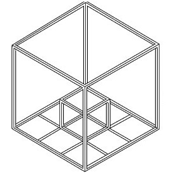posted on Monday, January 25, 2010
Fabric (geology)
From Wikipedia, the free encyclopedia In geology, a rock's fabric describes the spatial and geometric configuration of all the elements that make it up.[1].Types of fabric
- Primary fabric – a fabric created during the original formation of the rock e.g. a preferred orientation of clast long axes in a conglomerate, parallel to the flow direction, deposited by a fast waning current.
- Shape fabric – a fabric that is defined by the preferred orientation of inequant elements within the rock, such as platy or needle like mineral grains. It may also be formed by the deformation of originally equant elements such as mineral grains
- Crystallographic preferred orientation – In plastically deformed rocks the constituent minerals commonly display a preferred orientation of their crystal axes as a result of dislocation processes.
- S-fabric – a planar fabric such as cleavage or foliation, when it forms the dominant fabric in a rock, it may be called an S-tectonite
- L-fabric – a linear fabric such as mineral stretching lineation where aggregates of recrystallised grains are stretched out into the long axis of the finite strain ellipsoid, where it forms the dominant fabric in a rock, it may be called an L-tectonite.
- Penetrative fabric – a fabric that is present throughout the rock, down to the grain scale.

Comments
Post new comment